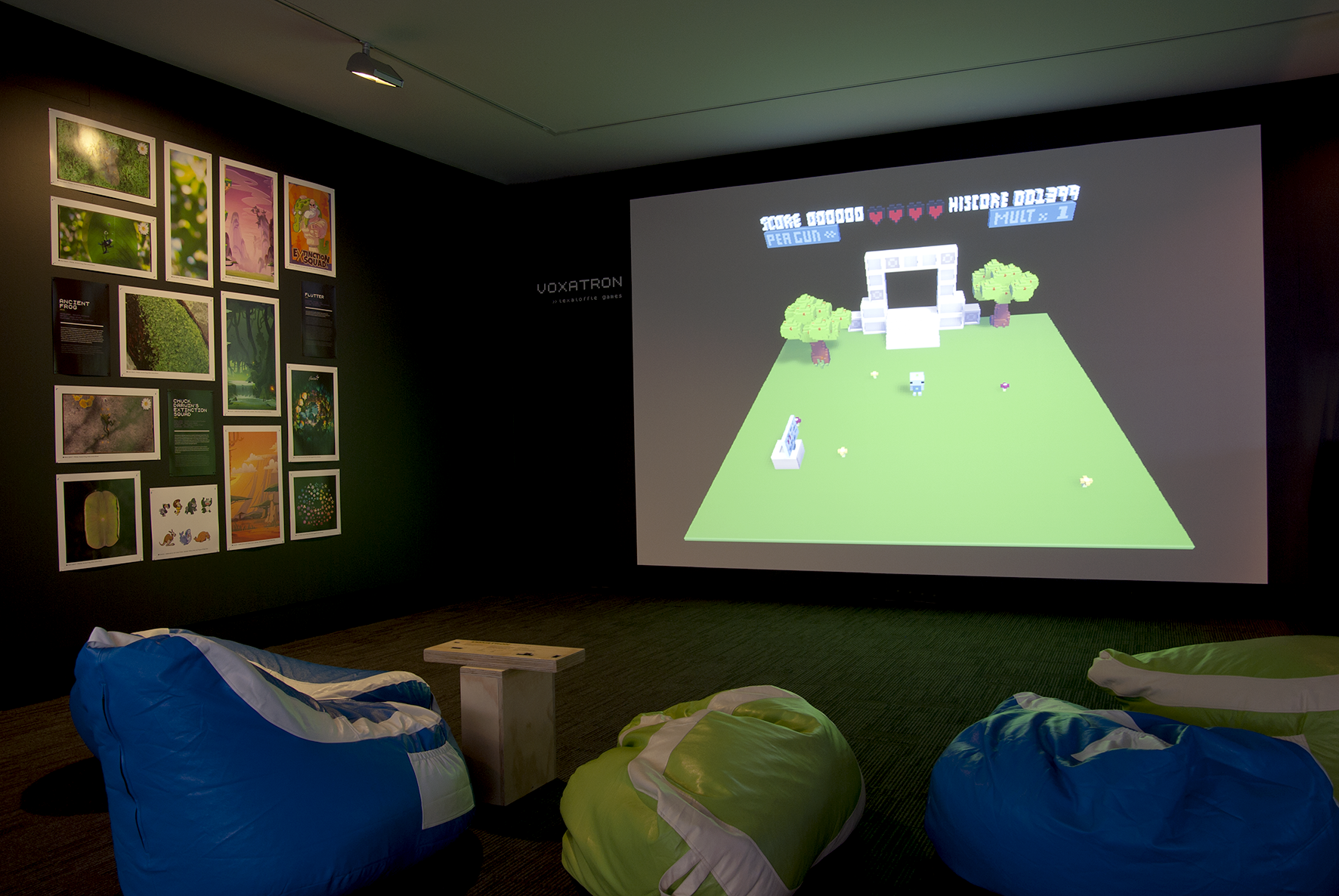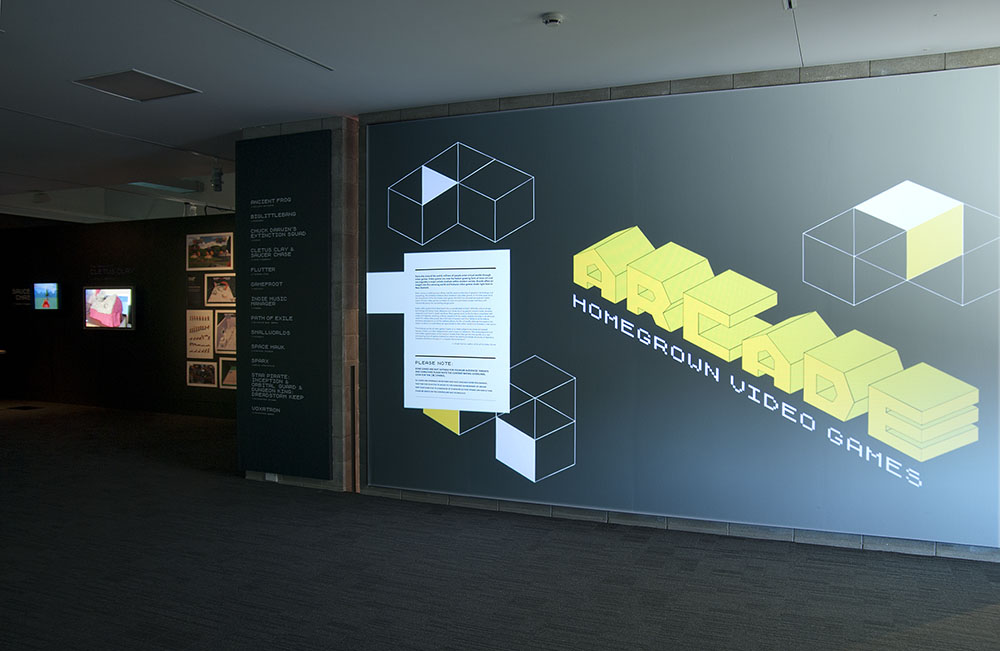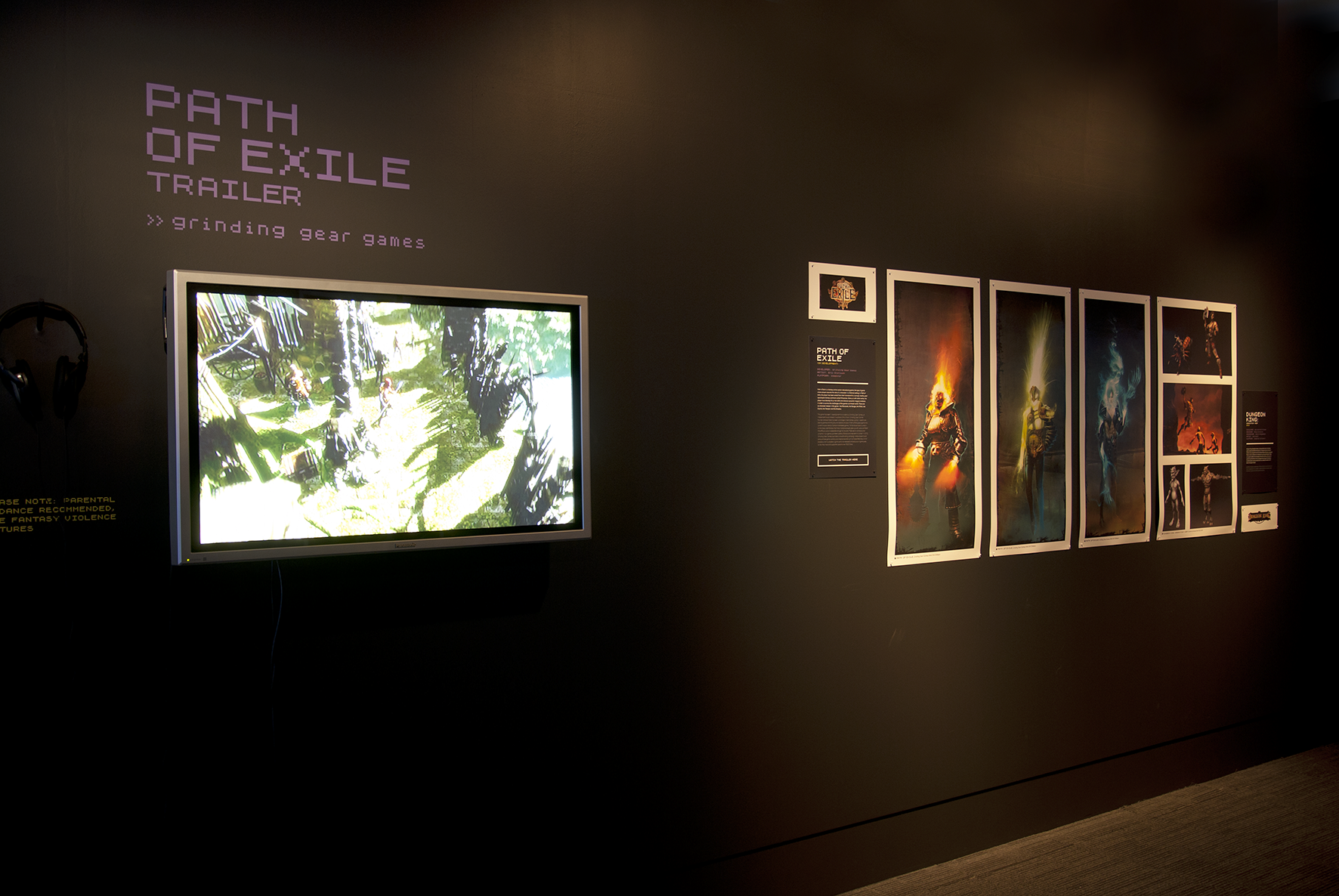Arcade: Homegrown
Video Games
Spatial graphics
Exhibition
Brand
My Roles
Exhibition Designer
Graphicl Designer
Project Lead
Digital Technician
AWARD
Finalist, New Zealand Museum Awards Museums Aotearoa
Arcade: Homegrown Video Games celebrates the talents of New Zealand's visionary game designers, showcasing the work of our most talented and influential indie gaming artists in an exhibition of striking visual effects, stunning digital art as well as still images, video and the actual games to play.
I designed the identity and graphic components for Arcade, as well as the show's layout and furniture, and helped to source and install the required technology. We needed the public to be able to able to play the games, while also restricting what they had access to, which was achieved by the design of the furniture, as well as through the use of software.
As a more graphics-heavy exhibition it benefited from having the graphic identity developed alongside the layout of the space and the design of the furniture. As a gamer, I could provide insights to the curator, who had no gaming experience, making suggestions of which games to include in the show.
Also, having some knowledge of the technology, I was able to-along with help from the various game developers-setup all of the games to be playable, while still being physically and digitally locked-down. Part of this was the design of the cases for each game's controller (keyboard, mouse or iPad), which only let visitors touch the few buttons necessary for the game, and hid the ones that weren't relevant or that would have let them get out of the game. I had the designs printed on plywood, which was then assembled into seamless cases, bringing a tactile experience into the digital, and simplifying the process of learning each game by having the instructions actually on the controls.
The initial brief was to create a teenage boy's bedroom, but cool". I achieved this with a careful balance between messy, dark, domestic, intriguing and high-tech. Once installed, a visitor's first impression of the space was of the high contrast between the dark walls and the bright screens, projections and neon-coloured graphics. To stop it feeling too slick the thick tracks of wires weren't hidden, instead left exposed to create interesting branches', which twist across the walls. Some games were playable from the comfort of colourful beanbags, with the concept art and game information pinned to the walls like posters, alongside wooden furniture which softened the usually-stark gallery.
After its initial showing at The Dowse, the next few years saw the exhibition toured to another four New Zealand cities, where I worked with each institution's exhibition designer on the new version of the layout, and then travelled there to provide technical assistance in setting it up.








